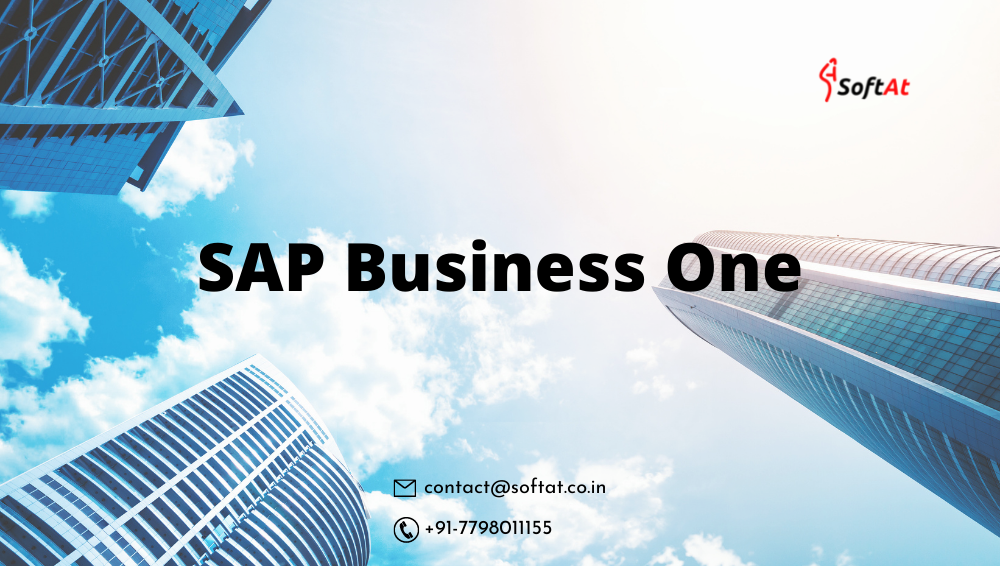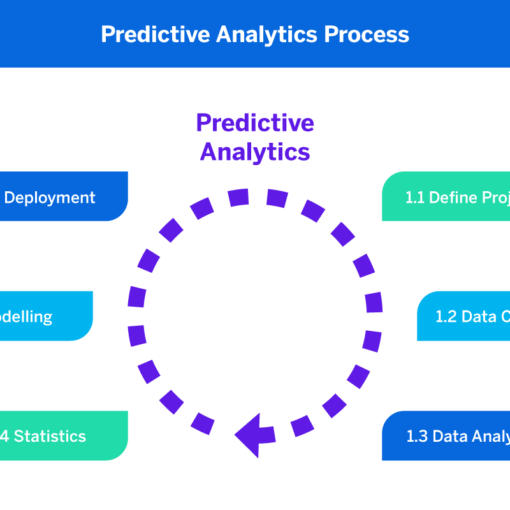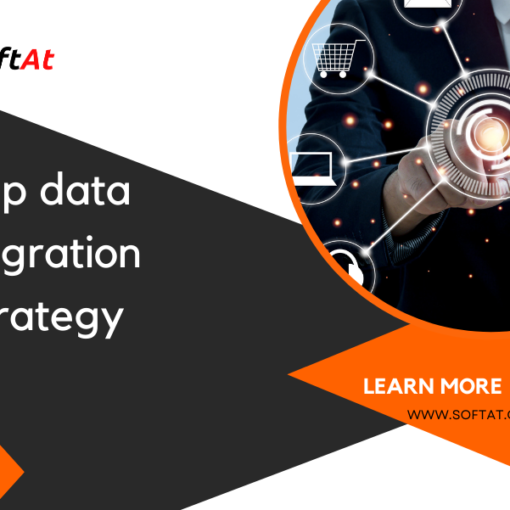What is SAP Business One?
SAP Business One is an ERP software platform designed primarily for small and medium-sized companies. SAP Businesses Ones (also known as SAP B1) was created with the idea that smaller businesses require ERP software to assist them to manage their operations, but not the type of ERP required by large, complicated businesses. Finance, customer relationship management, warehousing & production management, purchasing and procurement, and reporting & analytics are all functional modules.
SAP Business Ones was first released in 1996 under the name “Menahel” (“manager”) or “TopManage.” Reuven Agassi (CEO) and Gadi Shamia created the company (VP of sales, marketing, and product). Gadi Shamia created the product, while Hilla Mazinter was the lead developer.
TopManage was the first Windows/Mac busineses management product to be launched in the Israeli market, and it was solely sold in Israel for the first few years. TopManage began its global expansion into markets in Europe and Latin America in the year 2000. SAP was able to reach out to the small market through its partners, as well as acquire more busines from the smaller subsidiaries of its large customers, as a result of the acquisition.
SAP B1 was built on Microsoft SQL Server and now runs on the SAP HANA in-memory platform as well. It can be used on-premises or in the cloud, and it can be accessed from anywhere via a mobile app. SAP offers B1 largely through a partner network, which includes over 700 value-added resellers as of 2018. According to SAP, the partner network has also built more than 500 industry-specific applications. In 2018, the vendor claims to have over 60,000 customers.
Features of SAP B1
1. Financial
- Financial management improves margins, reduces errors/bugs, and make it better profitable decision-making.
- It automates the fundamental accounting processes.
- Manages cash flow, tracks fixed assets, controls all the budgets, and also monitors the various project costs.
- Banking and reconciliation processes the reconciliations, all the payments, and the bank statements.
- Financial reporting and analysis creates a standard or customized reports from real-time data.
- The Fixed-asset management tracks and manages various physical assets and equipment.
- Sales and customer management oversees the entire sales process and customer lifecycle.
2. Sales and Customer Management
- The Sales and opportunity management team tracks sales opportunities and leads activities throughout the sales cycle.
- The Customer management team stores all the customer data in one place by synchronizing and managing customer contacts in Microsoft Outlook.
- Marketing campaign management manages, creates, and analyzes all the marketing activities.
- Mobile sales department empowers your sales organization to manage the information on the go.
- Service management manages all the service agreements and warranty contracts.
3. Business Intelligence
- This functionality allows user to create timely, personalized, and accurate reports using data from around the company.
- Users may use straightforward tools to build reports, as well as analytics using predefined metrics and data visualizations.
4. Reporting & Real-time analysis
- In this, Reporting generates the integrated reports with real-time data.
- The Business intelligence department creates timely and accurate reports based on company’s wide data.
- Real-time analytics accesses the information quicker and then evaluates it with the power analytics.
- Interactive analysis integrates SAP Business One with standard Microsoft Excel functionalities.
- Drag and relate functionality drills down into data and uses the search assistance and workflow-based alerts.
- Reports and dashboards designs intuitive, interactive dashboards and reports.
5. Purchasing & Inventory control
- This tool allows customers to manage the entire order-to-pay cycle, including receipts, invoices, returns, and payments, which improves purchasing processes and reduces expenses.
- Master data management, faster procurement procedures, accounts payable, warehouse and accounting integration, and the ability to generate integrated reports with real-time data are all included in this solution.
SAP B1 Cloud
SAP Business One Cloud, powered by Amazon Web Services (AWS), is a cost-effective, integrated ERP system that scales as your company grows, allowing you to operate in real-time and profitably. SAP Organization One Cloud delivers you real-time data from every essential area of your business, from financials and sales to inventory and production, allowing you to make better business decisions anywhere, anytime.
SAP Business One Cloud comes in both single-tenant and multi-tenant configurations. The multi-tenant environment (MTE) is more cost-effective since infrastructure costs are shared among numerous firms. Your sensitive data is safeguarded with SAP Business One Cloud, so you can focus on running your business rather than worrying about security.
SAP Business one vs NetSuite
SAP Business One has a number of advantages over NetSuite that satisfy the critical ERP demands of today’s small and medium-sized businesses (SMEs).
SAP Business One is the premier ERP system for SMEs, with over 60,000 clients and one million users. SAP Business One provides complete and fully integrated features around financials, operations, CRM, inventory, and payroll, allowing businesses to better service their customers and run more efficiently. NetSuite is unable to do so. It’s no surprise that SAP has the largest ERP market share in the world.
What is the difference between SAP and SAP Business One?
SAP and SAP Business One are two distinct software solutions offered by SAP, catering to different segments of the market. Let’s explore the key differences between SAP and SAP Business One:
- Target Market and Company Size:
- SAP: SAP, short for Systems, Applications, and Products in Data Processing, is a leading provider of enterprise software solutions for large and multinational corporations. SAP’s flagship product, SAP ERP (Enterprise Resource Planning), is designed for large enterprises with complex organizational structures and global operations.
- SAP Business One: SAP Business One is specifically designed for small and medium-sized enterprises (SMEs). It is an integrated ERP system that provides comprehensive functionalities to support various business processes for small and mid-sized companies.
- Scope and Complexity:
- SAP: SAP ERP is a highly comprehensive and complex solution that covers a wide range of business processes, including finance, human resources, sales, procurement, manufacturing, supply chain, and more. It is suitable for organizations with diverse and complex business needs.
- SAP Business One: SAP Business One, on the other hand, is more streamlined and focused on core business processes such as accounting, sales, purchasing, inventory management, and customer relationship management. It provides essential functionalities that are essential for SMEs to manage their operations efficiently.
- Implementation Time and Cost:
- SAP: Implementing SAP ERP is a significant undertaking that requires careful planning, customization, and configuration to meet the specific needs of large enterprises. As a result, the implementation time and cost can be substantial, making it more feasible for larger companies with higher budgets.
- SAP Business One: SAP Business One is known for its faster implementation time and lower cost compared to SAP ERP. It is designed to be more user-friendly and can be implemented relatively quickly to get SMEs up and running with minimal disruption to their business.
- Customization and Integration:
- SAP: SAP ERP offers extensive customization options to cater to the unique requirements of large enterprises. It can be integrated with various third-party systems and modules to create a comprehensive and fully integrated business solution.
- SAP Business One: While SAP Business One is also customizable to some extent, the level of customization is more limited compared to SAP ERP. However, it still provides integration options with third-party applications to enhance its capabilities.
- Support and Maintenance:
- SAP: SAP ERP implementations typically require ongoing support and maintenance due to their complexity. Large enterprises may have dedicated IT teams or rely on SAP consulting partners for ongoing support.
- SAP Business One: SAP Business One is designed to be more straightforward to manage, and its maintenance requirements are generally less demanding. Many SMEs can handle basic support tasks in-house or opt for support services from SAP partners.
In summary, SAP is an enterprise-level solution designed for large corporations with complex needs, while SAP Business One is targeted at SMEs and provides a more streamlined and cost-effective approach to managing core business processes. The choice between the two depends on a company’s size, complexity, budget, and specific business requirements.





